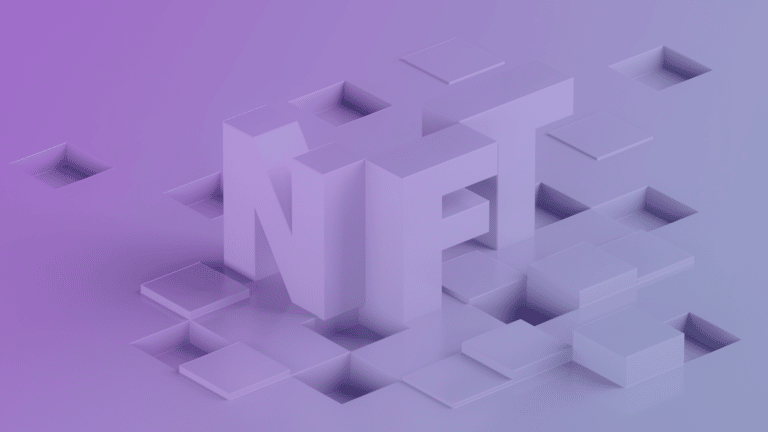Despite crypto’s dramatic price swings last quarter, blockchain technology continues to advance, with few signs of slowing down. Graph Day and Hack 2022 showed that developers remain primed to build and enable the next generation of blockchain applications.
Over 1,000 web3 enthusiasts gathered in San Francisco at the historic Palace of Fine Arts June 2-5 for the event. Anyone from blockchain beginners to experienced developers tuned in to several big announcements showing a bright future for web3 applications. Here are some of the bigger takeaways and what we might expect in the future as blockchain technology continues to develop.

Graph Day was hosted June 2 at Palace of Fine Arts, San Francisco, CA.
Photo by King of Hearts, CC BY-SA 4.0, via Wikimedia Commons.
New Use Cases for Decentralized Blockchain Technology
Over the past few years, decentralized finance and NFTs with fairly elementary use cases have been the dominant applications of blockchain technology. However, the conference and hackathon seemed to bring out a new interest around applications involving reputation-based systems, social media, and even public policy.
One prominent application unveiled was Geo, the first internet browser powered by web3 protocols like The Graph. Geo uses a reputation-based system and is unique in that it allows users themselves to curate, publish, and vote on public policy issues as opposed to major news outlets as the primary body driving the messaging. Edge & Node, the company behind Geo, spent over a year developing it and has released it for beta testing. Users interested in participating in the beta test can sign up for the waitlist here.
In a three-day hackathon following Graph Day, developers were also eager to build applications that embodied the ethos of decentralization. Competing for $450,000 in prize money, many project submissions aimed to further development of social platforms or build upon reputation-based systems similar to Geo.
Those seeking to improve reputation-based systems were in many cases looking for the proper balance between users’ desire to maintain the privacy of their transactions while still yielding a meaningful reputation score. When this balance is found, it could lead to future applications that rely on a reputation score — similar to how various industries today rely on someone’s credit score.
Infrastructure and Tooling Advancement
Many technical milestones were announced at Graph Day. These included:
Sunsetting of the Hosted Service
The Graph unveiled its three-phase roadmap to full decentralization by the end of Q1 2023. Upon completion, subgraphs will no longer be susceptible to a single point of failure.
Introduction of Substreams
Substreams will increase the speed at which blockchain data is indexed by 100 times, providing developers with the efficiency needed to grow new decentralized applications in web3.
Addition of GraphOps as Core Developer
GraphOps received a $12 million grant to continue its support of the indexer experience through R&D efforts and technical support. GraphOps became the sixth core developer team driving The Graph.
Addition of Messari as Core Subgraph Developer
Messari received a $12.5 million grant as the first core subgraph developer to help lead the charge in bringing standards to subgraph development across 35 blockchains. Messari will also build 200 plus quality subgraphs during the lifetime of the grant.
How Long Until Web3 Is Mainstream and Should I Get Involved?
With all these advancements in blockchain technology, many still wonder if an interoperable, permissionless, and decentralized internet will ever become mainstream or if it’s all a fad. After all, a number of people feel intimidated to maintain their own digital assets with a wallet like Metamask. It takes some getting used to and there’s no customer service to call if your seed phrase is lost.
On the other hand, a similar trend occurred in the not-so-distant past with the rise of the internet. Just like today where many people in crypto deliberately adjust wallet settings while making a transaction, early adopters of the internet contemplated similar questions as they reviewed their surroundings when initiating a dialup connection. We also saw similar market trends during the initial uncertainty phases caused by the dotcom bubble bursting and what we are seeing today with cryptocurrencies.
Looking at the internet now, however, nearly all people simply use the internet without thinking of the background mechanics. We may be seeing something similar with a new era of the internet, namely web3. If that’s the case, anyone who is curious and interested in web3 — whether a developer or not — should look into getting involved. All types of skill sets will be needed.
Kyle Rojas, Business Development and Partnerships at Edge & Node, summed up his observations of Graph Day 2022: “With 11 tech/community announcements, it’s hard to overstate the importance of the news that came out of Graph Day. From deprecating the hosted service and the plan to move 35 integrated chains to the decentralized network, to substreams that can increase indexing and syncing speed up to 100 times, to the launch of Geo: a web3 native, reputation-based browser powered by The Graph that will be the killer app to onboard the next billion users to web3 … it’s crazy what the core devs are taking on to change the world. Crazy in the best possible way.”



